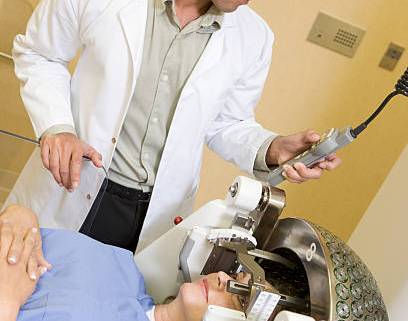Who Is Gamma Knife Surgery Suitable For?
Gamma Knife surgery is a rather misleading term, because it isn’t surgery in the traditional sense, and doesn’t involve a knife. It involves precisely targeted narrow beams of low-dose radiation, which combine at the site of the tumour to destroy the cells. The exact position of the tumour is detected using scans to build accurate 3D images.
This type of surgery is also known as stereotactic radiotherapy, or SRT. It has the advantage over conventional open surgery of substantially reducing the risk of bleeding and infection, and it has faster recovery times.
Gamma Knife surgery is less intrusive than open surgery, and the ability to precisely target the radiation beams means that the surrounding healthy tissue and organs will suffer little or no damage. It also means that you will usually need fewer treatments than with other types of radiotherapy, because a higher dose of radiation per treatment is used.
This treatment is most suited to small well-defined tumours. The decision whether or not it is most suitable will be made on an individual basis by a medical professional, or a multi-disciplinary team. If the tumour is near important nerves which may be damaged by radiation, other types of surgery may be recommended.
The most frequent type of tumours which are treated with gamma knife surgery are benign primary tumours, such as acoustic neuromas, pituitary adenomas and chordoma or meningiomas. Larger tumours are unsuitable for the treatment because the low doses of radiation involved wouldn’t be enough to destroy the tumour cells.
Increasing the dose of radiation would present too higher risk of damaging the healthy brain tissue, so for larger tumours, or those with ill defined edges, Gamma Knife surgery would not be recommended. If there are multiple tumours present, then the treatment would also usually be unsuitable.



